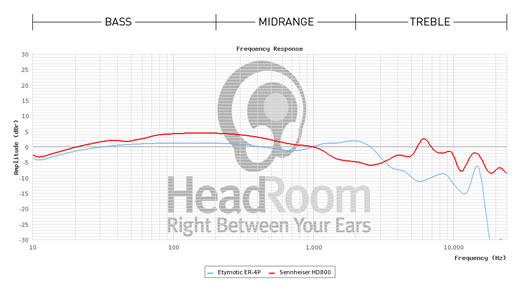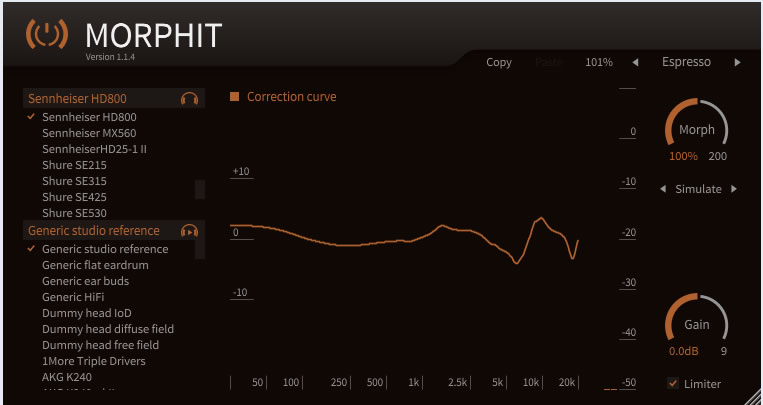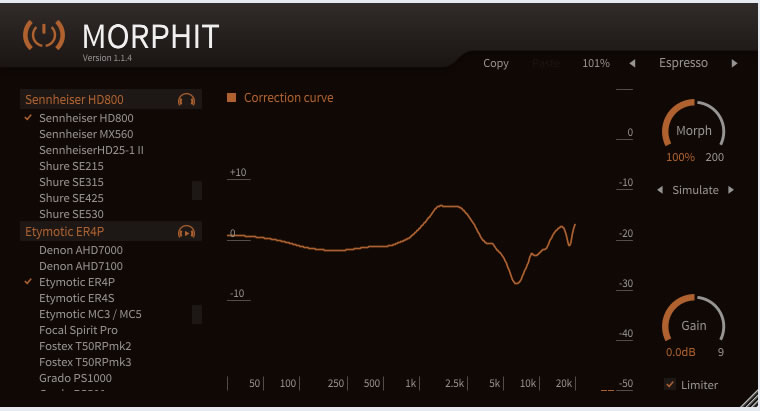EQ headphones
A lot of talk about EQ (equalizing) headphones on audio forums.
Headphones do measure different.
The most striking one is the frequency response.
Loudspeakers have a “straight” frequency response over a large range (+/- 3 dB).
Compared with them headphones are all over the place.
An option is to use EQ and apply a correction curve to get a straight frequency response.

Equalizer APO
Equalizer APO is a parametric / graphic equalizer for Windows.
It is implemented as an Audio Processing Object (APO) for the system effect infrastructure introduced with Windows Vista.
Features:
- virtually unlimited number of filters
- works on any number of channels
- very low latency, which makes it suited for interactive applications
- low CPU usage
- modular graphical user interface
- VST plug-in support
Requirements:
- Windows Vista or later (currently only Windows 7, 8, 8.1 and 10 have been tested)
- the application must not bypass the system effect infrastructure (APIs like ASIO or WASAPI exclusive mode can not be used)
As it uses Direct Sound (WASAPI in shared mode) you won't have automatic sample rate conversion. The windows CAudioLimiter will introduce distortion if there are signals close to 0 dBFS. Lowering the pre-amp volume a little, avoids this.
Ending the Windows Audio Quality Debate - Audio Science Review (2021)
Peace
Peter’s Equalizer APO Configuration Extension is a Windows PC interface for Equalizer APO.
Calibration tool for Headphone + Hearing capability - Audio Science Review
Morphit

Morphit offers a correction mode.
For each headphone in the list there is a correction curve.
However, it takes matters a bit further.
If you can EQ the frequency response to flat, you can also EQ it to a frequency response as characteristic of a another headphone.
This is what the Simulate mode does.
Select the headphone you are using.
Choose “Generic studio reference” and you get the correction curve for the headphone you are using.
Choose any other headphone and you get the frequency response of this headphone.

First I let it correct the response of the HD800
Makes a slight difference.
The I used the compare functionality by emulating a Etymotic ERP4P
Indeed the sound changes and get that lean and mean characteristic of the ERP4P
I had the feeling it is a bit overdone.
Than I did the opposite, using the ERP4P, I let Morphit emulate the HD800
Indeed you get the wider soundstage, a bit warmer sound but I’m not really convinced this sounds exactly like the HD800.
But I do think it gives you at least a taste of how other headphones sound.
Nice toy.
Free full functional demo, buy € 30 if you want to save your settings.
You can combine it with any media player supporting VST plug-ins.
MathAudio Headphone EQ VST $60.00
A graphic equalizer and crossfeed.
You can define 9 bands by choosing a certain frequency, apply the desired gain (plus or minus) and the width of the band.

A small band allows you to compensate for resonances.

A wide band allows you to compensate for e.g. a warm midrange.
All processing is done in 64 bits.
It support sample rates from 44 to 352 kHz.
It is a VST pluging
AutoEQ
AutoEQ is a project for equalizing headphone frequency responses automatically and it achieves this by parsing frequency response measurements and producing a equalization settings which correct the headphone to a neutral sound. This project currently has almost 2000 headphones covered. AutoEQ is not just a collection of automatically produced headphone equalization settings but also a tool for equalizing headphones for yourself.
Sources are published on Github
Today it is also available as a web based app.
EQ Settings for 700+ Headphones - Jaakko Pasanen
EQ Software for Windows, Linux, macOS, iOS/iPadOS and Android
As the title says, a big list of EQ software on Audio Science Review compiled by Doodski

